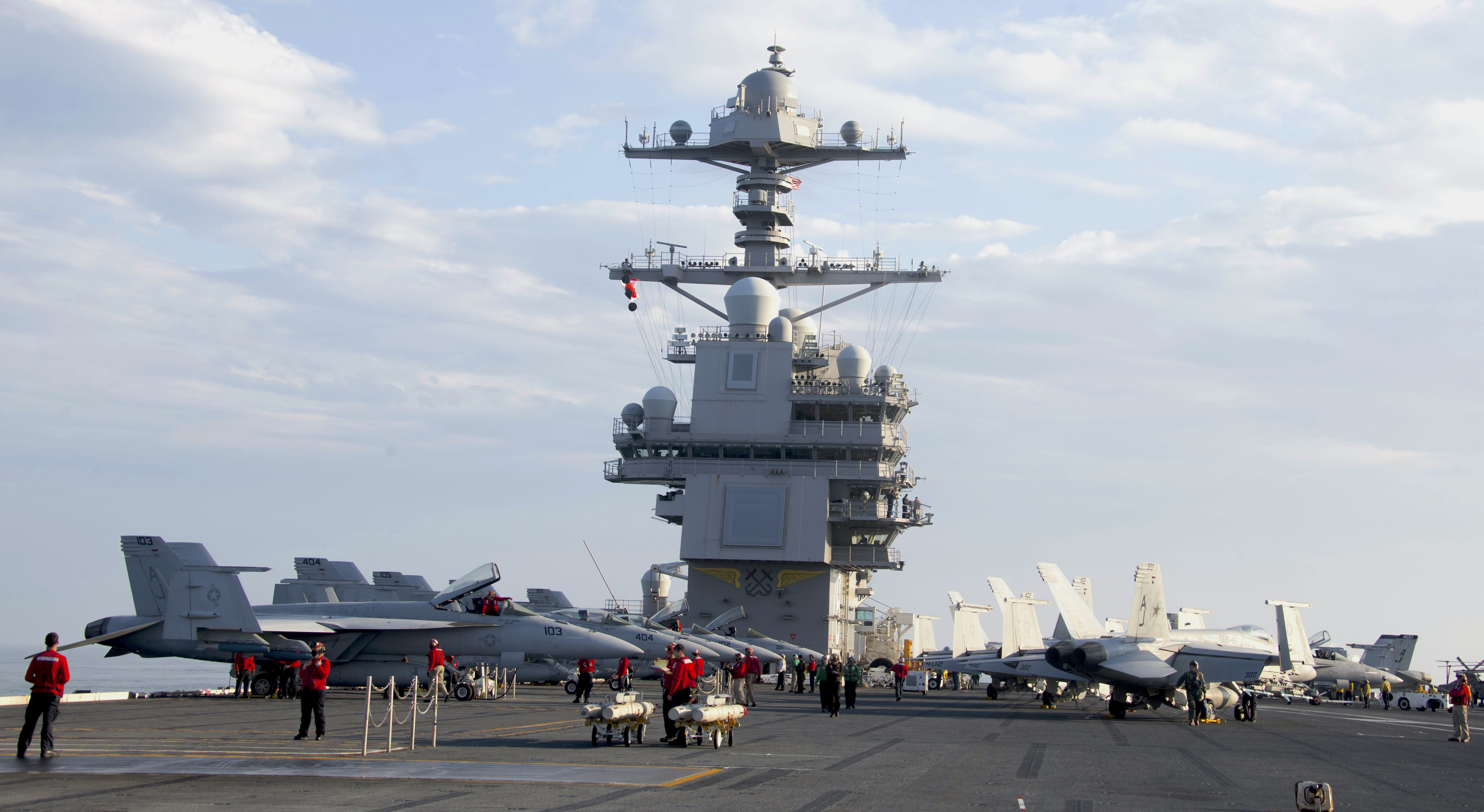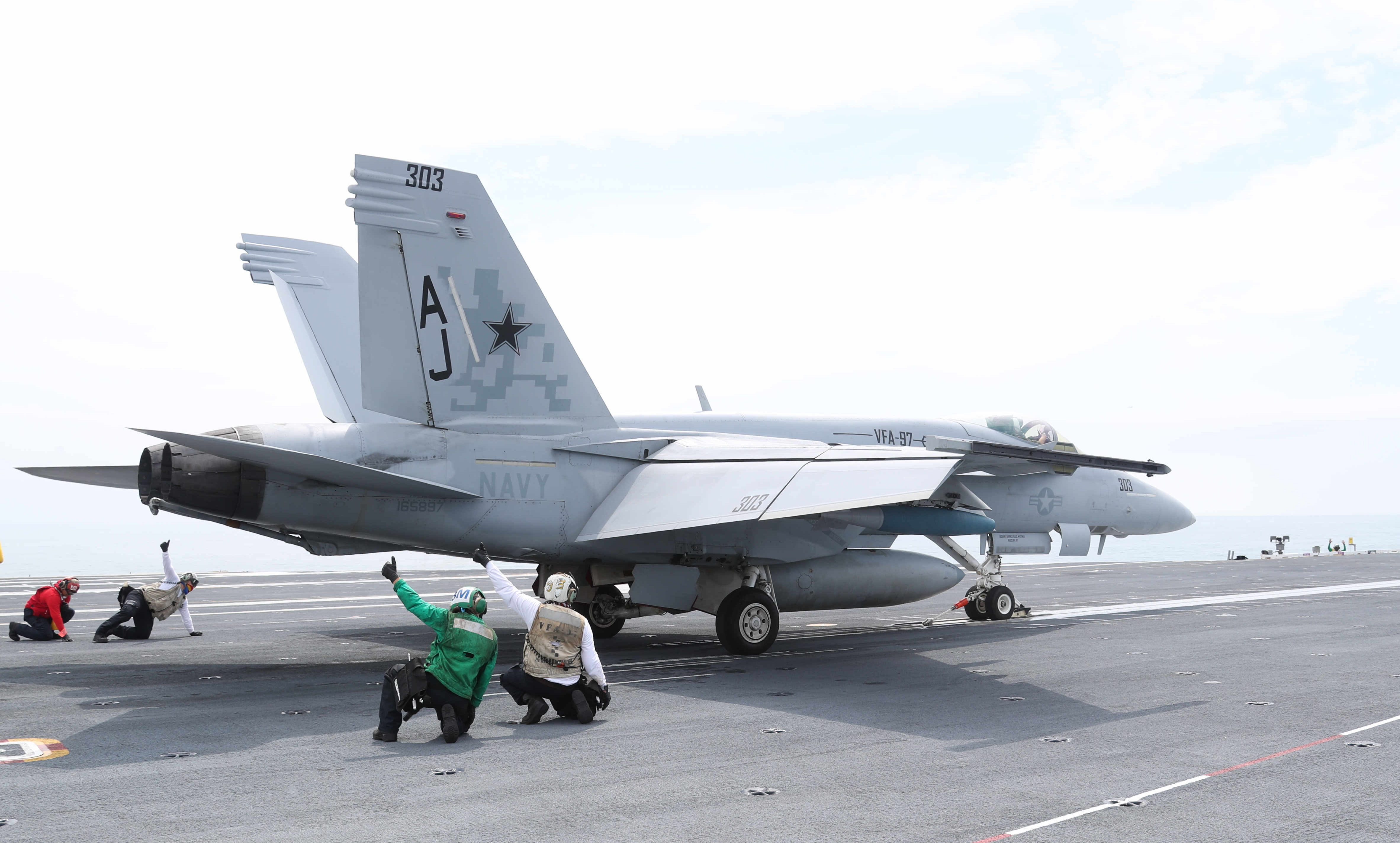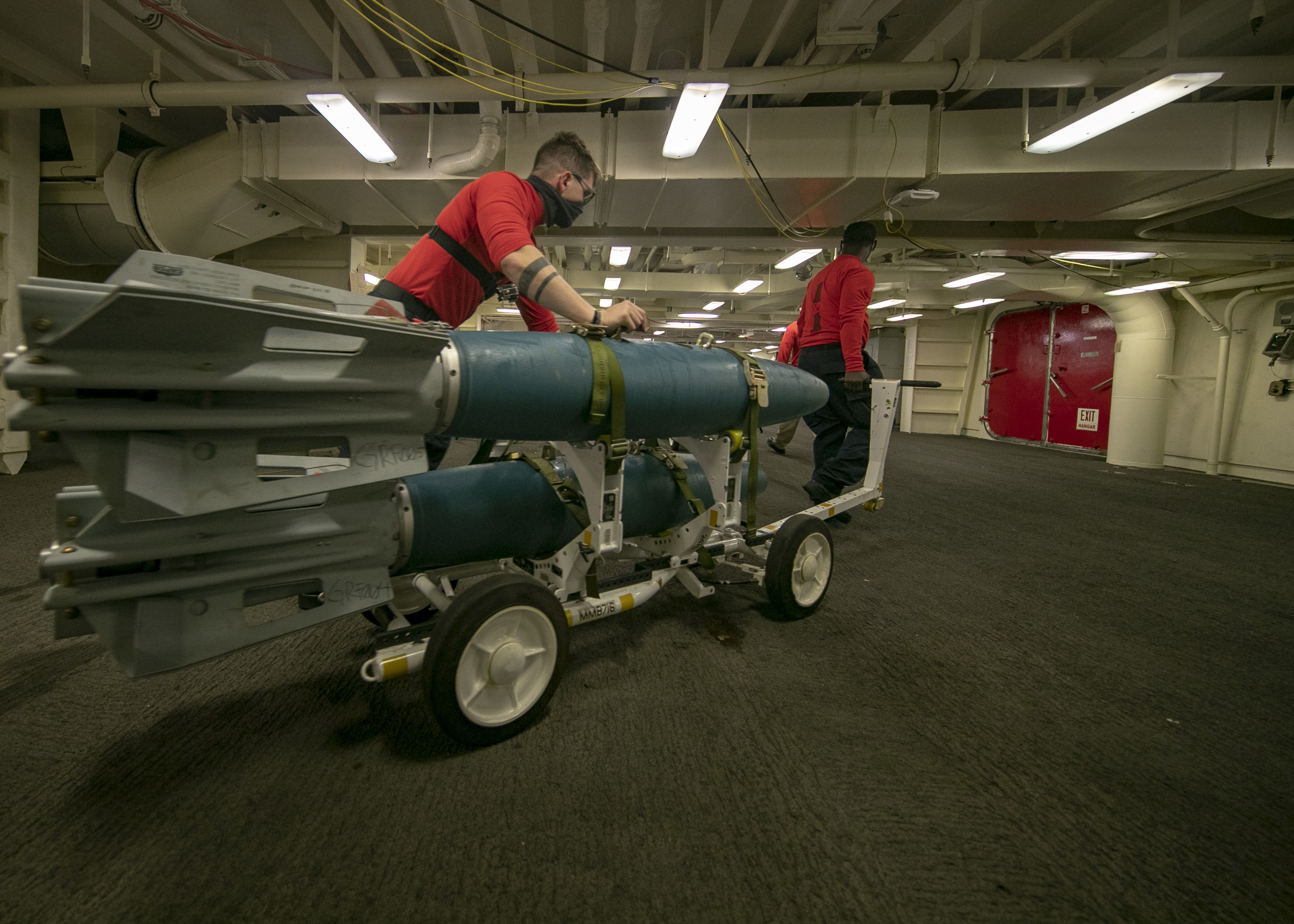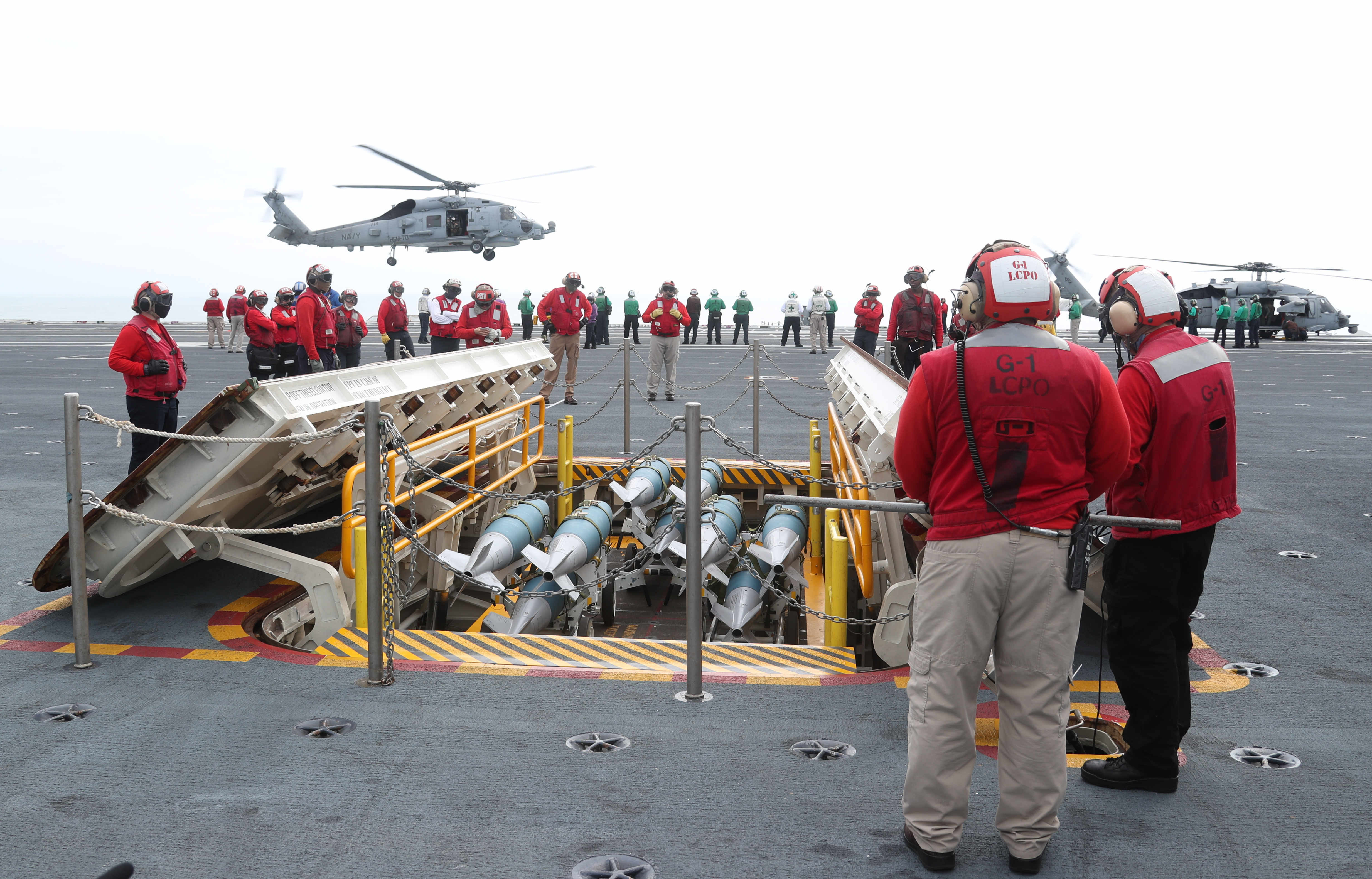
If the Navy has spent the last three years taking USS Gerald R. Ford (CVN-78) from a construction project to a platform that can launch and recover jets, the service is now taking steps to turn the ship into one that can fight in maritime combat.
Carrier Air Wing 8 embarked Ford and began cyclic operations on May 30, and some of the Carrier Strike Group 12 staff will embark this week for the first time as well, to start assembling “the basic building blocks of putting the entire strike group package together,” CSG 12 Commander Rear Adm. Craig Clapperton told reporters today.
Clapperton said he will embark some of his staff to the carrier on Wednesday for the first time ever, with the goal of permanently moving aboard the carrier by the end of the year. CVW 8 is still technically assigned to another carrier strike group for now, he noted, but by the fall it will officially become Ford’s associated air wing.
From the ship’s July 2017 first-at-sea trap landing and catapult launch until January’s Aircraft Compatibility Testing, Ford had only worked with test squadrons. In March, the first fleet pilots finally came aboard. CVW 8 helped Ford achieve Flight Deck Certification (FDC) and Carrier Air Traffic Control Center (CATCC) Certification on March 20, allowing Ford to begin serving as the East Coast carrier qualification platform for new pilots flying the T-45 Goshawk trainer jet and pilots just learning to fly their new platforms – F/A-18E-F Super Hornets and E-2D Advanced Hawkeyes.
Now, though Navy leadership has said Ford will carry the responsibility of hosting carrier qualifications on the East Coast until mid next year, the carrier will also be able to turn its attention to warfighting.

As a first step, the first-in-class carrier is likely to do some command and control exercises with the nearby Harry S. Truman Carrier Strike Group, at sea in the Mid-Atlantic aiming to avoid the COVID-19 pandemic until another CSG is certified and ready to deploy. Clapperton said the two carriers wouldn’t exchange any aircraft but could work on command and control and communications between the two flattops. Additionally, Ford may operate with the HST CSG’s destroyer squadron assets, the first time Ford would be operating in tandem with another ship at sea.
The rear admiral noted that a carrier is essentially a command and control asset and needs to be able to collect, synthesize and share data and a common operating picture both down throughout the CSG and also up to higher headquarters ashore. Clapperton said Ford would be taking the first steps towards this kind of networked operation in the next few weeks.
“We look forward to embarking the strike group this week and then continue to operationalize Ford and make it ready to meet all callings,” he said.
For the air wing, too, it’s an exciting time. After the CVW was onboard in March for the flight deck certification – which simply consisted of landing and launching over and over again – “what we’re doing in this at-sea period is we’re actually taking the ship and taking it from a carrier qualification mission to a mission that focuses on combat operations,” CVW 8 Commander Capt. Joshua Sager said during the media call today from aboard Ford at sea.
He added that the newly completed lower Advanced Weapons Elevator (AWE) now gives the air wing access to munitions deep into its magazine and the ability to swap planned loadouts in real-time as operational conditions change. He said that agility would be one focus of the air wing’s operations during this at-sea period, where they’d be able to run mission profiles and drop inert ordnance in support of air defense, air superiority and power projection missions.

Ford commander Capt. J.J. Cummings said during the call that, while there is still some work to be done on the ship – finishing the remainder of the weapons elevators, and stressing the new Advanced Arresting Gear (AAG) and Electromagnetic Aircraft Launch System (EMALS) to find areas where the engineers need to improve the new systems’ resiliency – the crew’s focus is now on learning to fight the new class of aircraft carrier.
About 1,000 new sailors have joined the crew in the past four to five months, he said, most of them with three- to five-year orders. Those sailors will therefore see the ship through its current post-delivery test and trials period, through next year’s full-ship shock trials and subsequent maintenance period, and eventually through the carrier’s maiden deployment potentially in 2023 or 2024.
Cummings said the Navy plans to develop a Ford-class talent pool, bringing back sailors who have served on Ford once they’ve done their shore duty and are ready for another sea duty assignment. The sailors on Ford today will be the ones leading on Ford and follow-on carriers in the future, he said, and so they’re taking this time now to become experts at using, maintaining and fighting their systems.

Clapperton said his carrier strike group staff would also have to learn a lot of new lessons about how to operate on the new class of carrier.
“This is a Ford strike group, not a Nimitz strike group. Ford is certainly set up differently, the layout is different, and while we certainly think that there will be some things … that will be similar to the Nimitz strike group, we also think that there will be things that are different,” the admiral said.
Rather than wait to learn those lessons until Ford is ready to begin pre-deployment training in a couple years, “the idea right now is to get out onboard the ship as a strike group, begin bringing in various pieces of our assets – really every single one of these underways that are going on between now and next March, we’re going to bring an increasing number of strike group players out there and then increase the complexity of our operations and our integration each time, with the specific goal of trying to figure out how is it we want to fight a Ford strike group. How is it similar and how is it dissimilar to a Nimitz strike group, and make sure we’re smart on that.”





